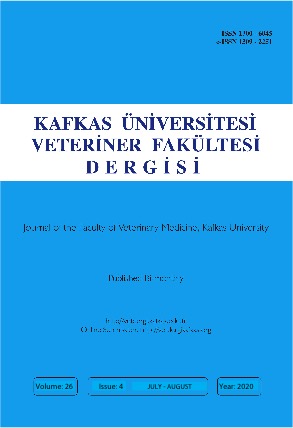
This journal is licensed under a Creative Commons Attribution-NonCommercial 4.0 International License
Kafkas Üniversitesi Veteriner Fakültesi Dergisi
2020 , Vol 26 , Issue 4
Occurrence and Molecular Characterization of Cephalosporin Resistant Escherichia coli Isolates from Chicken Meat
1University of Kafkas, Faculty of Veterinary Medicine, Department of Food Safety and Public Health, TR-36100 Kars - TURKEY2Hatay Mustafa Kemal University, Faculty of Veterinary Medicine, Department of Food Hygiene and Technology, TR-31040 Antakya, Hatay - TURKEY DOI : 10.9775/kvfd.2019.23514 Contamination of retail meat with extended spectrum beta-lactamase (ESBL) and/or AmpC type beta-lactamase (AmpC) producing Escherichia coli may contribute to increased incidences of infections in humans. Regular monitoring of these bacteria is required in the view of one health approach. In this study, 100 chicken meat samples obtained from Kars, Turkey were analysed and 214 isolates recovered from 72/100 samples were identified as E. coli. Antibiotic susceptibility tests showed that 15.42% of isolates (33/214) were resistant to at least one cephalosporin antibiotic, 20 (9.34%) were beta-lactamase producer. Among beta-lactamase producing E. coli isolates 8 had blaTEM, 7 had blaCTX-M and 3 had blaSHV genes. Plasmid-mediated AmpC beta-lactamase (blaCMY) gene was present in 13 isolates. Plasmid mediated quinolone resistance genes were also screened by polymerase chain reaction and identified by sequencing of the isolates. As a result, 3 isolates were found to be positive for qnrB, whereas the qnrS gene was detected in 4 isolates. Regarding the virulence genes 19 isolates were positive for fimH and 2 isolates were carrying kpsMT II. Phylo-group D2, A0, A1, B1 and D1 were detected in 13, 2, 2, 2 and 1 isolates, respectively. Our findings indicate that poultry meat could be an important carrier of ESBL positive E. coli. Keywords : Escherichia coli, Chicken, Cephalosporin, ESBL, AmpC










